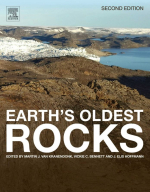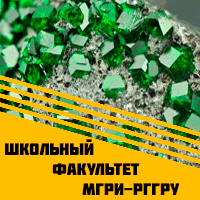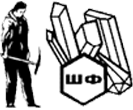Добрый день, Коллеги. Важное сообщение, просьба принять участие. Музей Ферсмана ищет помощь для реставрационных работ в помещении. Подробности по ссылке
Earth’s oldest rocks / Древнейшие горные породы Земли
Studies of the early Solar System (ESS) allow us to address many questions: When, and how fast, did the planets form? What was the composition of material that accreted into planets? Was this accreting material homogeneous or heterogeneous? How does our Solar System compare to numerous other planetary systems that have recently been discovered by exoplanet search programs? Like other planetary systems, our Solar System is thought to have formed by gravitational collapse of a dense portion of a large interstellar molecular cloud. Over a short, but eventful, period of a few million years (Fig. 1.1), a cloud of gas and fine dust was transformed into an assembly of rocky bodies called planetesimals, which subsequently increased in size and decreased in number through collisional breakdown and reassembly, forming larger bodies (about Moon- to Mars-sized) called planetary embryos and protoplanets, and eventually our current planetary system (e.g., Chambers, 2004).
Some bodies were withdrawn from the ongoing planetary growth at the intermediate stages of accretion and survive as asteroids. Later, they experienced collisions, and some of the excavated material entered Earth-crossing orbits and landed on Earth as meteorites. Along with planetary samples delivered by the space missions, meteorites are our source of knowledge about the range of nebular and asteroidal processes that preceded final stages of planetary accretion. Chondrites (primitive meteorites that contain chondrules) and achondrites (igneous rocks from asteroids) preserve information about the interstellar medium and molecular clouds, and the environment of the ESS formation and initial evolution. To understand condensation and accretion processes in the solar protoplanetary disk, and the formation and transformation of asteroids and planets, we need to put a timescale alongside them. Ages for refractory calcium- and aluminum-rich inclusions (CAIs) in carbonaceous chondrites, which are generally assumed to mark the starting point for Solar System formation (Kita et al., 2013), are converging on a single value of w4567 Ma. The situation with chondrule and achondrite chronology is more complex, but there has been substantial progress on this in the recent years. The ages of chondrules are used to constrain a wide variety of ESS processes, including the lifetime of the protoplanetary disk, the timing of giant planet migration, accretion times for planetesimals, the onset of planetary differentiation based on the abundance of short-lived radionuclides, and thermal processing in the disk. Achondrites constrain the timing of another set of processes: formation of the earliest magma oceans, large-scale asteroidal differentiation, formation of the early igneous crusts, onset of metamorphic events, and collisional breakdown of asteroids. <...>




